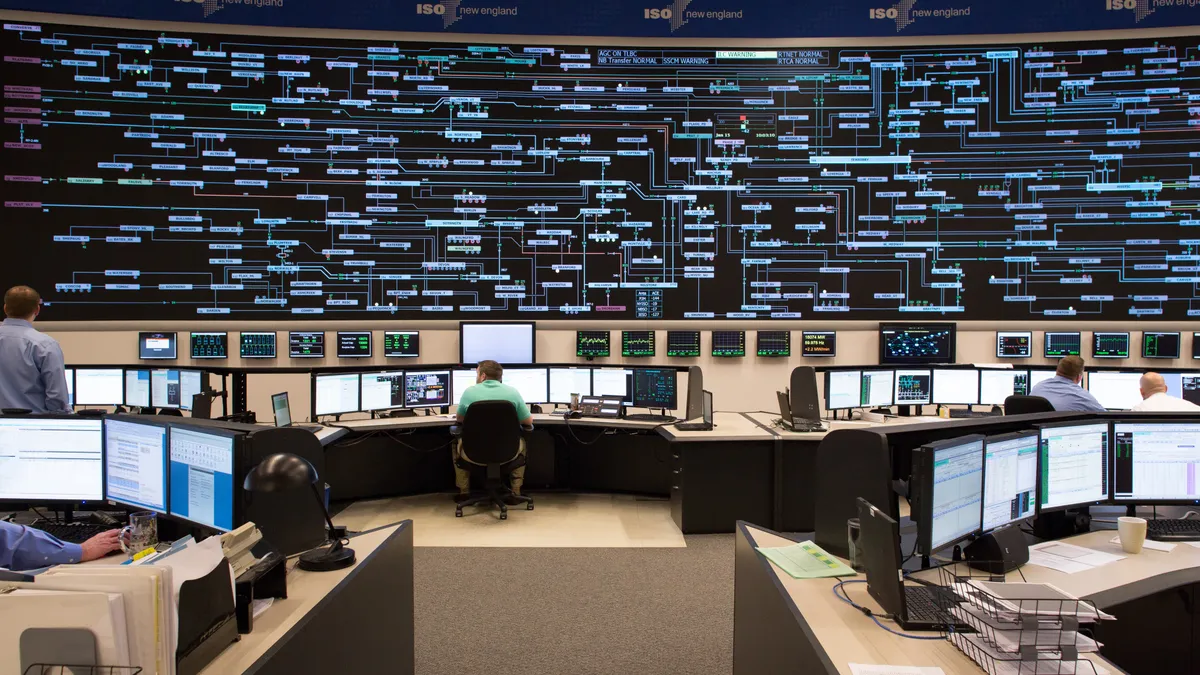Dive Brief:
- About 95% of nearly 21 GW of energy resources currently proposed for the New England region are grid-scale wind, solar and battery projects, according to the Independent System Operator of New England (ISO-NE).
- The number "reflects a dramatic shift" in the grid operator's interconnnection queue, ISO-NE president and CEO Gordon van Welie said in a press call on Friday. Five years ago, the majority of projects sought by developers were natural gas resources, he said.
- ISO-NE does not estimate how much of the expected renewable and storage capacity will be built or which resources will be impacted by the grid operator's Competitive Auctions with Sponsored Policy Resources (CASPR) mechanism. The CASPR plan, intended to mitigate the impact of state subsidies for clean energy on the market, remains the best solution at the moment, van Welie said.
Dive Insight:
While not all of the projects in the queue will be developed, the shift "signals that that's the type of project that developers are seeking to propose or to bring forward," Anne George, ISO-NE's VP of external affairs and corporate communications, said on the call.
The makeup of the proposed 20,927 MW includes 68% wind, 15% solar and 11% battery storage. Natural gas makes up only 5% or 1,037 MW. Developers are asking ISO-NE to study proposals for many more potential projects as well.
In 2016, natural gas made up 63% of the queue, with wind representing 33% of the 13,000 MW of total proposed generation. In 2015, the interconnection queue had about 10,000 MW of proposed projects — 57% natural gas and 42% wind.
"The growing share of renewables in the ISO-NE interconnection queue is a trend seen across all RTOs and reflects renewables' increasing cost-competitiveness in every region of the country," Gregory Wetstone, CEO and president of the American Council on Renewable Energy, said in a statement.
Of the nearly 14.3 GW of wind proposals currently in the ISO-NE interconnection queue, 13.5 GW are offshore wind projects in Massachusetts, Rhode Island and Connecticut.
"My guess is a lot of the [developers with projects in the queue] are positioning themselves for upcoming state procurements," van Welie said.
Coastal New England states have aggressive offshore wind targets, and large procurements are expected in the next five years in the region. The largest barriers to development are siting the projects, van Welie said.
"As developers work their way through the siting issues, we're going to see more projects looking to enter the capacity markets," he said.
Vineyard Wind received a capacity supply obligation in ISO-NE's 2019 auction, but the project has faced delays on key federal permitting from the Bureau of Ocean Energy Management.
However, clean energy advocates and renewables developers have voiced concerns that the offshore wind industry will face major headwinds from the CASPR mechanism.
According to van Welie, the only explicit barrier to offshore wind development competing in capacity markets is the minimum offer price rule, which checks whether a subsidy needs to be taken into account. CASPR employs a capacity substitution auction, wherein resources that receive subsidies bid to replace fossil fuel resources that are seeking to exit the market.
"We expect CASPR and the substitution auction to work over time, and so as we see more of those [offshore wind] resources seeking to come in and we potentially have additional resources seeking to leave the market, you will see that substitution auction likely have activity," George said.















